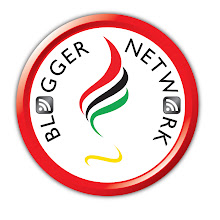I listen to certain Christmas songs all year round. Does that surprise you? Well, it certainly surprises me. Sometimes I wonder why I turn my I
pod to these specific songs when they are very much focused on the Christmas season. But as I listen to them I remember why and those songs bring my faith to life. They speak about Truth in a person . . . the Christ.
But thinking about Truth as a person is a very odd thing to do, isn't it?
Ever since Christianity's growth began to challenge the ideas and power structures of their day, the quest for what is "the Truth" has been at the center of wars, nation-building and cultural
upheaval. Truth with a
capital "T" has been our goal and we have taken extreme measures to discover it, define it and monopolize it.
But how have we defined and understood Truth? For the most part we have done so through a series of propositions. Ideas that are observable and reproducible. We developed the scientific method as a way to document and categorize these ideas as our understanding of our surroundings grew more and more complex.
In reality we have done the same with our faith. We have created volumes full of statements about what we believe and how they impacts our lives and actions. Those volumes become truth with a capital "T" and we use them as foundational for our understanding of truth.
There is definitely a place for this kind of knowing, but I want to stress for you another kind of knowing that is equally important . . . Truth incarnate. In Isaiah 48:17 God says "I am the Lord your God, who teaches you what is best for you, who directs you in the way you should go." We all believe that God is the source of Truth and the one who can direct us and guide us. But that is a pretty comfortable idea since God is this supreme being out there that never became something that we could touch or feel. Never, that is, until Jesus came as the incarnation of God to this Earth to bring salvation and redemption.
All of a sudden truth with a capital "T" has a name, wears sandals, eats fish, has nightmares and eventually died on the cross. That is the idea that I keep coming back to with these Christmas songs. The idea that all that is real, true and right was
among us! People like you and me saw the God of the universe in human form and we have records of what He said and what He did. I love how Jesus says in John 14:6, "If you really knew me, you would know my Father as well."
What this means is that the things that Jesus chose to care about represent Truth. The people He spent time with and the stories He shared represent His values and His presentation of God's character to us. Every time I read the Gospels, I am amazed that I am able to see into God's mind through the actions of Jesus.
But if you
truly believe that we can see truth with a capital "T" when we look at Jesus, then the next thing that God did is even more amazing. Once Jesus had left the disciples, the Holy Spirit descended and came to live in all those who believed. In fact, thousands of years later, we as Christ-followers still have the blessing and honor of having the Holy Spirit in us.
So does that mean that truth with a capital "T" lives in us . . . you . . . me? Does that mean that when I respond to the Spirit and not to my flesh that I am representing the God of the universe and showing His mind and His heart to others?
If so than our lives are
incarnational and our actions can
reveal the character, values, ideas, desires of God. And because God's Truth is so much larger than anything we as humans can fully grasp, when we represent God and put aside our sin and selfishness, we are revealing things that God wants others to see and know. Could it be that God might use you to reveal a new idea that fills out what He has already provided through thousands of years of other believers and through His Word?
That changes how I view my preparation for tomorrow. My thoughts, attitudes and actions could be used by God to bring Truth to those around me, or they could be used to satisfy my sin nature and the Prince of Darkness who plagues this world and torments so many.
Will my life be a tool for God to bring Truth into this world? I cannot think of a question with more practical and immediate implications than this one!








